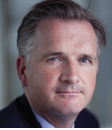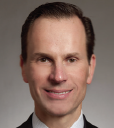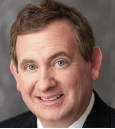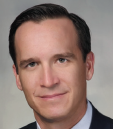Click here to download the commentary in a pdf format which include sponsorships.
Expected interest rate hikes by the Federal Reserve have produced volatile fixed-income markets that are extremely challenging for many investors. But in spite of the uncertainties, financial advisors know that bonds add needed diversity to portfolios and are less risky than stock over the long term. They deliver income on a schedule to investors who need cash flow in retirement.
Here, bond portfolio managers offer their outlooks in commentaries that provide valuable insight on what financial advisors should consider when deciding how to allocate clients’ money to this essential asset class.
 Rob Galusza,
Rob Galusza,
Portfolio Manager,
Fidelity Investments
Enhancing Bond Fund Total Return
In the current bond market environment, investors see low yields and the specter of higher rates as a threat to their fixed-income allocations. In contrast, active bond fund managers see this environment as an opportunity to help clients meet their fixed-income objectives. They have a number of active strategies with the potential to enhance total return: 1) carry, 2) rolldown, 3) yield-curve changes/reshapings and 4) yield-spread changes. Rolldown is one of the most critical in today’s environment.
Investors typically demand higher yields to lend money for longer periods of time, so the U.S. Treasury yield curve, a proxy for the risk-free yield curve, is characteristically upward sloping. Rolldown is a strategy used by active bond fund managers to complement a bond investment’s income generation. The steepness of the yield curve dictates the degree of its contribution to return. This strategy can enhance a bond’s total return in a rising interest rate environment and allow an investor to benefit from a steepening yield curve. It works best when the yield curve remains upward sloping and when rates rise less than the markets are predicting.
Consider the steepness of the current risk-free yield curve. While the fed funds rate continues to be pegged between 0 and 25 basis points, and there have been fits and starts in the pace of U.S. economic growth so far, investors have priced an unwinding of the Fed’s QE program into the market. This has contributed to higher yields for longer maturities. The resulting yield-curve steepness, especially between two- and five-year maturities, can present attractive rolldown opportunities, which can enhance total return.
In our view, investors need not give up the benefits of bond funds in a well-balanced portfolio to protect their assets from the possibility of higher interest rates. They can potentially maximize their total-return prospects through active bond fund strategies that exploit carry, rolldown and yield-curve and spread changes. To effectively do so, investors need to identify their investment horizons and understand the potential benefits and trade-offs certain bond fund investments pose.
For more information on Fidelity Investments, please see our profile on page 72.
 John Pattullo
John Pattullo
Head of Retail Fixed Income,
Henderson Global Investors
 Jenna Barnard, CFA
Jenna Barnard, CFA
Deputy Head of Retail Fixed Income,
Henderson Global Investors
Turning Japanese?
A disinflationary pulse is rippling across the world. European companies are holding mountains of cash, which a decade ago would have burnt a hole in the pocket of any chief executive, yet M&A and CAPEX activity is muted. Despite the ultra-cheap money, European consumers and corporates are in no mood to borrow.
Richard Koo, economist at Nomura, calls this a “balance sheet recession”. Hailing from Japan, which is still struggling with the deflationary forces, he notes that when the household and corporate sectors are engaged in balance sheet repair only fiscal stimulus can properly invigorate an economy, monetary stimulus merely leads to mini bubbles in asset-prices. Witness the U.S. stock market at an all-time high or UK house prices near record levels yet the CPI is below 2% in both countries.
It is still unclear whether we are truly recovering from the great financial crisis. In 2010, markets were debating when interest rates would rise from their lows, four years on and we are still having that debate. Europe’s economy remains anemic so fresh urgency surrounds QE and whether the ECB will engage in U.S.-style purchases of sovereign debt.
Subscribing to the balance sheet recession thinking has served us well, but we have to keep an open mind. We remain alert to signs of inflation, looking at wage indicators and the demand for credit as reflected in the major bank lending surveys.
Perhaps this is symptomatic of a world that is struggling to shake off the mindset of the last few decades, convinced that inflation is around the corner. The reality may be that we are all turning Japanese and may have to get used to a “secular stagnation” low growth, low inflation world. However, not a bad environment for a fixed income investor.
For more information on Henderson Global Investors please see our profile on page 72.
 Gerald Buetow, Ph.D., CFA,
Gerald Buetow, Ph.D., CFA,
Chief Investment Officer,
Innealta Capital
Duration and Sector Exposure Decisions Paramount
Risk-markets have been lulled into an unnatural sense of calm and certainty by the Federal Reserve’s unprecedented monetary policies. Never in the history of capital markets has monetary policy played such an exclusively crucial role in asset valuations. As the Fed ends Quantitative Easing III, tremendously difficult questions arise regarding what the interest rate dynamic will look like as they attempt to manage policy rates using never before used tools. Moreover, will such operations even transmit into the real economy with a leveraged ratio that would make a hedge fund blush? How will spread and mortgage products react? Currently, markets are assuming a seamless transition into the unknown. As a result, duration and sector exposure decisions will prove paramount to the success of portfolio and risk management.
Most plausible progressions from here, in our view, involve generally increasing volatility among risk markets, in no small part driven by greater investor uncertainty in regard to the Fed’s post-taper management of it’s now grossly bloated balance sheet. We also expect rates to generally rise, and while our prognosis is for a relatively slow uptrend, we believe investors should consider the not-unlikely scenario in which the rise is more rapid.
We thus will continue to seek a careful balance between exposure to credit and duration, focusing on sector selection to enhance yield, improve diversification and maintain conservative posturing to minimize potential impacts from spread widening and term structure steepening. We favor shorter-duration domestic exposures that can enhance portfolio yield, while finding attractive yield / duration tradeoffs and diversification opportunities among emerging market exposures. Still, we retain a heightened sensitivity to credit risk, given the potential for spreads to gap out on changes in rate expectations, in addition to the potential for greater disappointment in macroeconomic growth.
The progression of monetary policy normalization remains highly uncertain. And the prospects for broad gains in macroeconomic growth are weak, with arguments for incremental weakness gaining credibility. This potentially disorienting environment demands a calm demeanor, as much as it does quick hands. We therefore favor a conservative stance to maintain our composure and flexibility, with our analytical and trading tools honed to take advantage of opportunities this long-overdue process is likely to produce.
For more information on Innealta Capital please see our profile on page 74.
 Dan Fuss
Dan Fuss
Vice Chairman
Loomis, Sayles & Company, L.P.
The Fed: Between Rock & Hard Place
It is hard to feel sorry for those who live in a marble palace but I do. Here’s why…
Looking forward in markets is difficult, to say the least. When I do this, there is an outline that guides the thinking. It is normally in four sections: Peace, People, Politics and Prosperity. These are each briefly covered below. Today, there is a new category: Central Banks.
Here we go… Peace, or lack thereof, is always the most important item. Normally this revolves around how much is spent for defense and what impact that has on the Federal Government balance and subsequent Treasury Borrowing Requirement.
Today, this is very important since there are a number of things happening around the world that call into question our continued moderation in defense spending as a percent of GNP. Net/net, we are proceeding on a basis that says that we will not have to step up defense spending over the next few years. A quick read of the front page of the newspaper indicates that assumption, which was quite valid a year ago, is now very tenuous. In view of the added geopolitical strain in the Middle-East, Eastern Europe and Asia, it does look like future defense spending will rise considerably. Hopefully, this is incorrect but now it seems to be the way things are going.
People, in short form, really covers two areas both of which are somewhat adverse. First is the change in the demographic proportions of our population and of populations around the world. Essentially, we are all getting older, on average. Second, in the advanced social democracies, the proportion of government spending that goes to support the older generations, as well as others in need, is rising. It is also rising as a percent of GNP. This brings us to the third label…
Politics! If both defense spending and “transfer payments” for social programs are rising, then we should have rising revenues to match them. That’s where the problem lies. It seems very difficult, in the U.S., to match the rise in spending with a rise in revenues since the best way to get revenues to go up is to raise taxes. This is definitely not a winning political program unless there is some crisis invoked event that is readily understood by all. Those rarely happen. The current geopolitical scene is scary but certainly not at the level that would cause a public outcry to raise taxes. Thus, it is reasonable to assume that Federal Government revenues will lag spending more than they have in recent years. That will result in a rising deficit. That results in a rising Treasury bond requirement. All other things being equal, that results in rising interest rates!
Prosperity is really shorthand for how does the economy do? As an increasing proportion of savings goes to finance the government, that certainly does tend to depress private sector activity. However, the government deficit can also be met by borrowing from others. That has happened in recent years as foreign central banks have been buyers of U.S. government debt in some magnitude. Also, in the last few years, our own Central Bank has been a good size buyer of our government debt. That is now scaling back to the point where it is nearly gone. So, unless we can encourage foreigners to buy our debt, it is quite likely that, all other things being equal, interest rates will rise to the point where they will start to buy our debt and so will we as individuals.
The conclusion of all of the above is that we are in for a period of time where U.S. dollar based interest rates rise. However, something new has been added. The role of the central banks, particularly of the largest ones, has evolved in an unofficial way. Because of the increase flows of capital around the world, particularly to the “emerging market”, global economic activity and political stability is more vulnerable to the flows of global capital. Because of that, the largest central banks have now been backed into an unofficial role (and this point is openly argued) of directly and indirectly providing liquidity to markets and economies in other parts of the world. The net/net of this, for the U.S., is that we now have an increased responsibility for the capital markets in other parts of the world, particularly during times of increased geopolitical stress. That’s where we’re at now. It makes it much tougher for the Fed to conduct monetary policy only with an eye on our domestic economy. The domestic situation is the Rock and the geopolitical is the Hard Place. How this plays out is anyone’s guess right now. My sense is that there will be a middle ground between the pressures for rising rates coming from the domestic side and the pressures for lower rates and expanded liquidity coming from the geopolitical side. That compromise will probably allow rates to go up somewhat in the U.S. but not to the degree we would normally anticipate with an economy growing more than twice as fast as our total population.
The next few years are going to be very interesting…
For more information on Loomis Sayles please see our profile on page 74.
 Tony Rodriguez,
Tony Rodriguez,
Co-Head Fixed Income,
Nuveen Asset Management
Taxable Fixed Income Outlook: Riding the Rate Roller Coaster
While active managers can add value through interest rate positioning, predicting rates in the short term is a tricky task. Despite widespread fears of rising rates this year, yields confounded investors again by declining. We believe investors can position their bond portfolios for this rate roller coaster using actively managed, broadly diversified, multi-sector bond strategies. These portfolios have many return drivers, in addition to interest rate positioning, that we believe can help make the roller coaster more like a Sunday drive.
Interest rates can be incredibly unpredictable, and this cycle has been exactly that. Just when everyone felt certain that Federal Reserve (Fed) tapering of asset purchases would cause rates to rise, they fell.
Many ask why rates remain so low. The puzzle is complicated because so many factors affect interest rates. These include fundamental factors such as growth rates, inflation expectations, preference for shorter-term securities, and investor risk appetite. In addition, technical factors that drive the supply and demand dynamics have had greater impact lately.
This more tactical buying or selling of larger positions can impact rates. However, it is important to remember these shorter-term technical situations don’t change the longer-term fundamental trends that will inevitably unfold. Unless the economy derails, it is likely that rates will rise modestly over the intermediate term.
Let Active Managers Help Smooth the Ride. Even for the most experienced managers, positioning for short-term rate changes can be tricky. Rather than trying to time the market, consider selecting a multi-sector bond strategy that gives the manager the necessary flexibility to position for changing markets. In addition to managing portfolio duration and adjusting yield curve positioning, sector selection can help protect against rising rates. A portfolio that can move among many market segments may be better positioned to ride out the rate roller coaster.
For more information on Nuveen Asset Management please see our profile on page 74.
 Bob Jolly
Bob Jolly
Head of Global Macro,
Portfolio Manager,
Schroder Global Strategic Bond Fund
Risk Rotation Rather Than Sector Rotation
We ran out of road. In the aftermath of the financial crisis, investors reallocated their cash into government bonds, added high-grade credit, then rotated into high yield and emerging market debt, and finally opted for less liquid segments of the market such as private loans and direct lending. So what to do next? Selling your bonds?
Global demographics will increase demand for bonds. Fixed income securities are widely used for collateral in derivative transactions, and recent regulatory changes mean that more transactions will need to be collateralized going forward. In addition to these rather technical reasons, fixed income will continue to perform the tasks it has always performed: generate income, diversify your portfolio and reduce the overall risk of your portfolio.
We live in a world of growing divergence. The U.S. economy is growing at a healthy pace, its banking system has been restored to health and the monetary policy will most likely shift to a less accommodating stance shortly. On the other hand, Japan and the Eurozone struggle to create growth, have an inefficient and still undercapitalized banking system and will have to loosen monetary policy to fight deflationary pressures. Add to that that most of the major central banks are now using the exchange rate to set their monetary policy, and lots of opportunities become available to investors who can adopt a global strategy that has the flexibility to seize these opportunities. Traditional bond portfolios will struggle with rising interest rates.
These unconstrained strategies allocate risk to interest rate, currency and credit strategies with the aim to generate positive returns regardless of the direction of interest rates, credit spreads or exchange rates. So rather than looking for the “next promising sector”, it is much better from a risk/reward perspective to embrace flexibility.
For more information on Schroders please see our website at www.schroderfunds.com and our profile on page 74.
 Tad Rivelle,
Tad Rivelle,
Chief Investment Officer—Fixed Income,
TCW
A Coming Winter of Discontent
In investing, as in life, timing can be everything. The cycles of the capital markets are as immutable as the seasons. Those who commit risk capital while the cycle is enjoying its “risk on” spring will prosper; those who avoided risk-taking during the spring would be well-advised not to do so as the autumn chill approaches. Unfortunately, there is precious little understanding of what drives financial and economic cycles.
Traditionally, there have been two narratives to explain the cycle. Recessions happened either because businesses over-expanded, creating an unwanted inventory build that needed to be worked down, or because consumers became exuberant and caused inflation, forcing the Fed to pull the punch bowl. But these narratives do not explain 2008, let alone 2000-02, 1998, 1994, or 1990.
An examination of deleveragings of the past 30 years provides the necessary guidance: we now live in an integrated global economy mirrored by a globalized financial system. This has meant the credit and business cycles have become almost the same. If capital markets are willing to extend the frontiers of credit one extra step and one more marginal loan can go to one more marginal borrower, we maintain growth. But once the high water mark in credit is reached, a de-leveraging builds momentum, bringing an economic downturn.
Economic variables are highly dependent upon the willingness of the capital markets to engage in lending activity that fuels a re-leveraging economy. The notion that high asset prices and low unemployment inoculate the economy from downturns is belied by history.
The ramifications for investors in the current cycle are clear. If you want to understand how “old” the cycle is, it is critical to judge the quality and durability of underwriting standards. With the ratio of asset prices to incomes nearly back to peak 2007 levels, and given the rapid erosion in debt underwriting standards, we view the cycle as sufficiently aged as to counsel caution. We have steadily reduced our exposure to rates and to risk-taking in credit with the expectation that a winter of higher rates, wider risk premia, and greater volatility lies ahead.
For more information on TCW please see our profile on page 74.
 Jason Brady, CFA,
Jason Brady, CFA,
Head of Taxable Fixed Income,
Thornburg Investment Management
Credit Diversity, Not Duration, Matters Most
As the Federal Reserve gears up to raise short-term interest rates for the first time in nearly a decade, market participants increasingly worry about the duration of their fixed income portfolios. Put simply, duration is the measure of the change in price of a bond or portfolio for a given change in the yield of that same bond or portfolio. However, due to the market obsession with the Fed’s imminent action, some portfolios have been marketed and bought on the basis of a “zero duration” to eliminate the fear of loss in a rising-rate environment.
While rates may rise, a “zero” or “negative” duration is not necessarily the most important feature of a resilient fixed income portfolio. Several decades ago, most fixed income instruments were fairly high quality, U.S. dollar-denominated bonds, movements of which were closely correlated with moves in U.S. Treasuries and, at the short end, the Federal Funds Target Rate. Investors could receive a significant real yield. In the 1990s, that real—after inflation—yield generally ranged around 3.5% to 4% for 10-year Treasuries. Today, with those same real yields around 0.50%, the risk/reward of high-quality fixed income is quite different. While those portfolios can and should remain an important part of any investor’s allocation, the diversity and dispersion in credit markets nowadays can help tremendously.
Executing effectively in the context of a broad mandate for providing income and total return, without depending on an individual asset class—be it high-yield corporates, asset-backed securities, mortgages, etc.—can be valuable. We combine those individual, diverse opportunities into a moderate risk, moderate reward portfolio that can solve a number of investor challenges. In addition, because many of those assets do not correlate highly with U.S. Treasuries, the portfolio as a whole can prove protective in a period of rising interest rates.
It’s the diversity of fixed income, not a single, easily manipulated statistic that matters most when rates rise. Investors would do well to review the outcomes of the two approaches in 2013, when the 10-year Treasury yield climbed nearly 120 basis points.
The views expressed by the portfolio manager reflect his professional opinion and should not be considered buy or sell recommendations. These views are subject to change.
For more information on Thornburg Investment Management please see our profile on page 74.